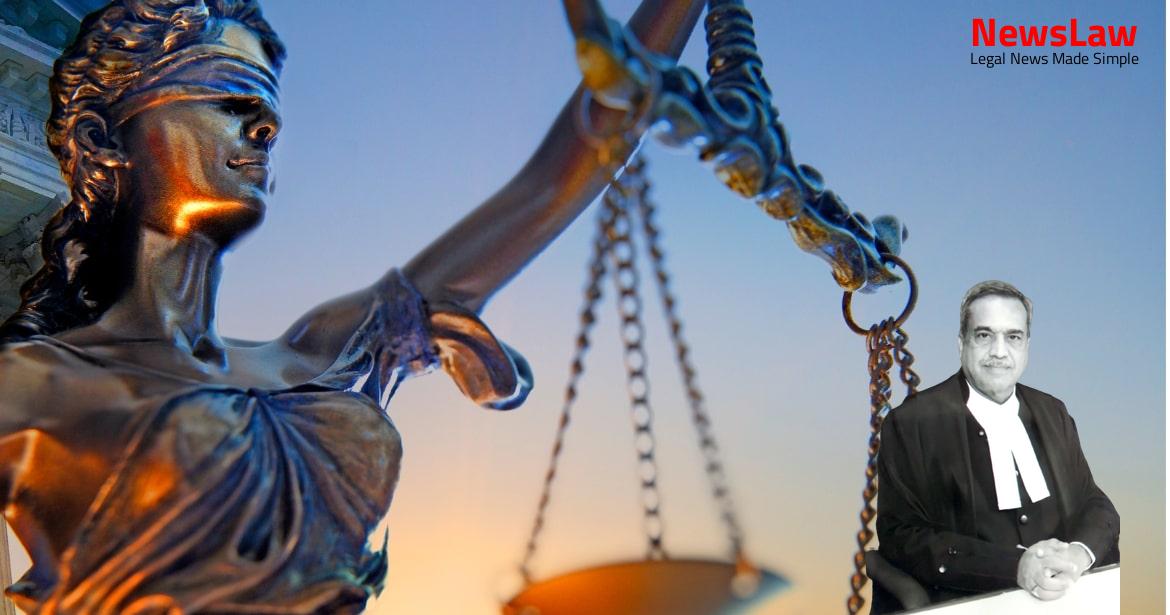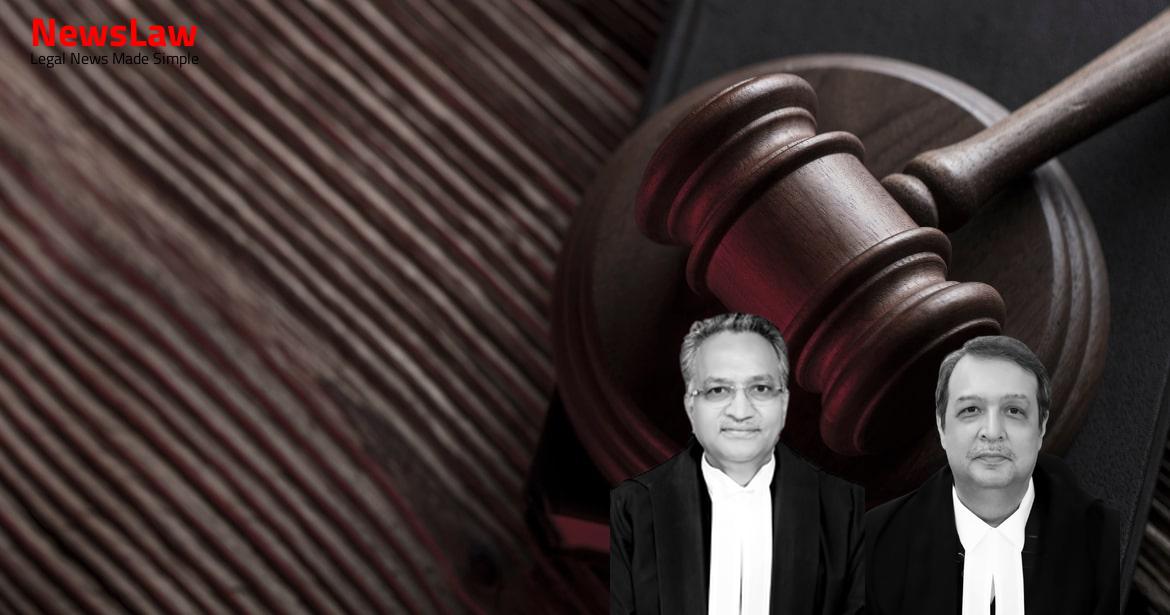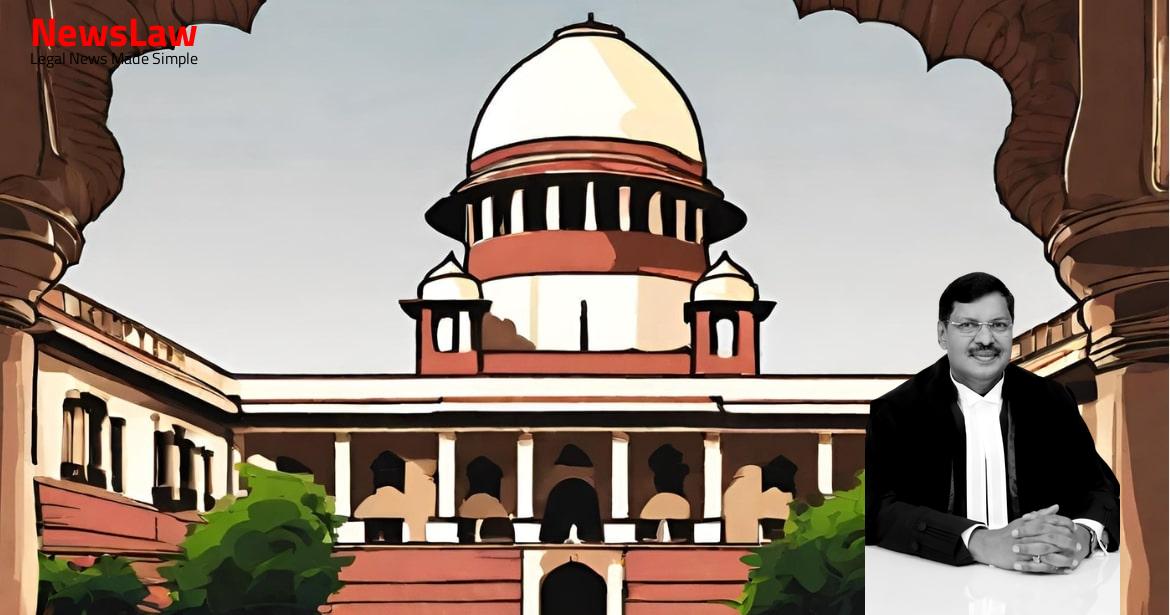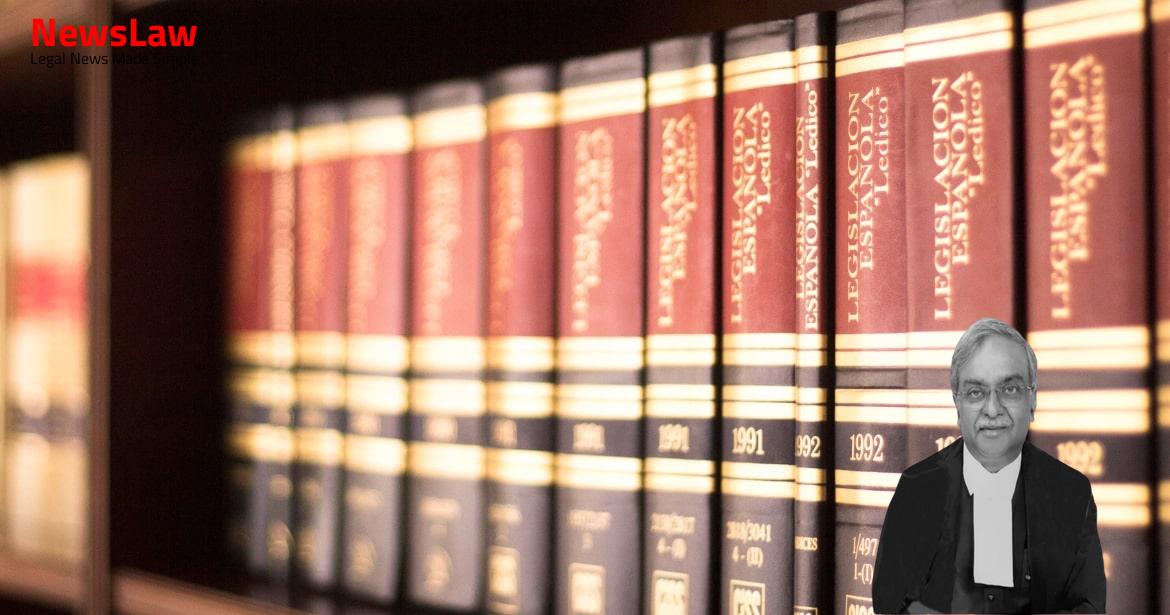Delve into the detailed legal analysis conducted by the court in a significant death penalty case. The case not only involved a thorough examination of the evidence but also highlighted the importance of legal principles in determining guilt and sentencing. Stay tuned to explore the complexities of the legal process and the implications it has on the outcome of the case.
Facts
- The witnesses identified A-1 and A-2 as the motorbike riders with the kidnapped boy.
- Witnesses testified to A-2 visiting A-1’s house.
- Evidence of demand for ransom was presented, including phone calls demanding ransom.
- Description of CCTV footage revelations and corroboration with witness testimonies.
- Witnesses saw A-1 and A-2 with the kidnapped boy at various locations.
- A-1 and A-2’s reactions and conversations with acquaintances regarding the kidnapping.
- Identification of personal items and clothes related to the crime.
- Witness statements confirming the last seen location and events with the boy.
- Prosecution failed to provide evidence of the deceased dying before 18:00 hrs when the accused was at a location 26 kms away from his house.
- No questions were asked to A-1 regarding the time of death during his statement under Section 313 Cr.P.C.
- Conviction under Sections 120-B and 201 read with Section 34 IPC was affirmed by the High Court.
- The resistance marks on the deceased indicated death occurred after 18:00 hrs, raising doubt on A-1’s guilt under Section 302 IPC.
- A-1 and A-2 were initially sentenced to imprisonment but later received death penalty for specific offences.
Also Read: Interpretation of Mandatory Statutory Time Limits
Arguments
- The accused A-1, who is the petitioner, argued that his intention under Section 34 IPC must continue until the completion of the offense.
- It was contended that A-1 was in police custody from 18:50 hrs on 1st September, 2014, which was before his formal arrest recorded on 2nd September, 2014 at 17:10 hrs.
- Reference was made to legal precedents such as Karanpura Development Co. Ltd. v. Raja Kamakshya Narain Singh and Sri Venkataramana Devaru & Ors. v. State of Mysore & Ors. to support the argument.
- The absence of a repeat ransom call was highlighted to suggest that the victim was killed after the initial ransom call at 20:38 hrs.
- It was emphasized that surrender by A-1 terminated any conspiracy, and his custody during the ransom calls indicated his lack of involvement.
- The petitioner’s counsel argued that the victim’s time of death was brought up for the first time on appeal and cannot alter the prosecution’s case.
- Concerning the lack of injuries noticed by witnesses on the victim, it was contended that A-1’s surrender time would exonerate him from the murder charge as he was in police custody.
- A-1’s alleged involvement in the ransom call after surrender was disputed, casting doubt on his role in the crime.
- A higher standard of proof for death sentence was referenced from the case Ashok Debbarma v. State of Tripura to stress the need for certainty in such cases.
- The argument that A-1 intended kidnapping for ransom, but the conspiracy had ended before the ransom calls, was put forth to challenge the murder charge.
- Evidence of lack of blood or saliva on A-1’s clothes when the victim had injuries was used to suggest A-1’s innocence in the murder.
- The accused’s statement under Section 313 Cr.P.C. was cited, and the logic of making a ransom call when the victim was alive was questioned.
- The petitioner argued that the victim was sedated during the crime, indicated by CCTV footage, and dissociated from the ransom calls due to being in custody at the time.
- Arguments made by the defense counsel for A-1 regarding the disclosure statement lacking mention of the manner of killing and therefore A-1 cannot be held guilty of causing death
- Discussion of A-1 initially planning the kidnapping with Sandeep Katre and the context of the conspiracy to loot Sandeep Katre’s employer
- Argument concerning Rupali identifying A-2 in court without a TIP being conducted and the improbability of her actions during an advanced stage of pregnancy
- Dispute over the lack of a TIP conducted to identify the accused by Namdeo Dhawale and skepticism towards the witness’s observation of the accused’s motorbike
- Mention of stolen goods being recovered from the other accused and the absence of a motive attributed to A-2 by the prosecution
- Claims made by defense counsel for A-2 challenging the veracity of the ransom demand and criticizing witness testimonies
- Contention that A-2 did not directly participate in the murder of the child and that the crime was likely committed by A-1 between specific time frames for revenge purposes
- Discussion of ‘residual doubt’ as a higher standard of proof following recent cases and concerns raised by learned Senior Counsel about A-1’s involvement in another burglary case
- Dispute over the lack of voice sample taken from A-2 for identification and doubts raised about the identification process of A-2 by witnesses
- Arguments against the death sentence imposed on the accused due to their young age, lack of criminal antecedents, and the case not meeting the criteria for a rarest of rare situations
- Claims regarding A-1 surrendering promptly and ongoing criminal activities after being released on bail
- Challenges to the recovery of the dead body based on the timing and circumstances of the disclosure statement, as well as doubts about the blood stains found on A-1’s clothes
- Dispute over the proof of articles concealed in A-2’s house and the absence of a threat to life in the ransom call regarding the offense under Section 364A IPC
- Argument about the lack of disclosure in the statements regarding the manner of causing death and the inference drawn from the recovery of the dead body
Also Read: Reservation Shortfall for Hindu Nadar Community
Analysis
- The argument that the accused was shown to be arrested around 19:00 hrs. is an incorrect reading of the arrest form (Ex.17).
- The injuries could be caused by one or two persons even without resistance from the victim due to his inert condition.
- Accused needs to cross-examine relevant witnesses to assert specific facts not evident in the prosecution evidence.
- Accused’s failure to cross-examine witnesses weakens the argument at trial or appellate stages.
- Both accused A-1 and A-2 did not present any defense except claiming false implication.
- Separation of A-1 from co-conspirator does not absolve him of the charges as they acted in tandem.
- Prosecution must prove victim’s death before 18:00 hrs to establish culpable homicide amounting to murder.
- Desperation of A-1 to kidnap for ransom indicates intention to become rich through ransom.
- Kidnapping a child inherently threatens death if ransom is not paid.
- Accused’s association in the crime from 16:00 hrs. to 18:33:59 hrs. indicates active participation.
- A-1’s motive to harm Dr. Chandak and enrich himself through criminal acts is supported by evidence.
- The victim’s inert condition and A-1’s actions indicate involvement in the crime.
- Failure to cross-examine witnesses to establish contradictory facts weakens the defense’s position.
- Presumption under Section 106 of the Evidence Act shifts the burden to the accused to explain events.
- Inference of common intention between A-1 and A-2 to kidnap the child is supported by evidence.
- Prosecution’s burden to prove time of death and guilt is discussed in relation to the case facts.
- Lack of evidence connecting A-1 to certain actions weakens the defense’s position.
- Accused’s cooperative attitude post-arrest is cited as a mitigating factor by the defense.
- Kidnapping for ransom establishes a motive and intention to commit a serious crime.
- Presence of accused together with victim at various locations indicates shared intention and active participation.
- Disclosure statements and call details implicate the accused in the crime plan and execution.
- Failure to prove changing versions of the prosecution’s case impacts its credibility.
- Prosecution’s duty to establish guilt beyond reasonable doubt is emphasized.
- Contradictions and inconsistencies in testimony can weaken the prosecution’s case.
- The discovery of the victim’s body and surrounding circumstances implicate the accused in the crime.
- Accused’s attempt to distance from specific actions is refuted based on evidence.
- The analysis considers the timing of events, witness testimonies, and prosecution’s burden of proof in establishing guilt.
- The party is obliged to put his case in cross-examination of witnesses of the opposite party.
- The court has the power to commute the death sentence to life imprisonment with no possibility of release in the interest of justice.
- Section 146 of the Evidence Act grants the right to cross-examine witnesses presented by the opposite party.
- The court should address whether the ‘rarest of rare’ test is satisfied in death penalty cases.
- The principles of Section 106 of the Evidence Act have been examined in various cases.
- The House of Lords in the Browne v. Dunn case emphasized the importance of challenging witnesses in cross-examination.
- Residual doubt can be considered in death sentencing cases.
- The prosecution bears the burden of proving the case beyond reasonable doubt despite last seen evidence.
- The judgments in Hate Singh Bhagat Singh and Sharad Birdhichand Sarda are not relevant to the current case.
- The presumption of innocence is in favor of the accused and the burden of proof lies with the prosecution.
- The power to impose modified punishment lies with the High Court and the Supreme Court.
- The motive of the accused to take life was for ransom.
- Common intention in a crime requires pre-arranged planning and prior agreement.
- In cases of conspiracy, all participants can be treated as conspirators even if some quit the conspiracy.
- The section on common intention cannot undermine the burden of proof on the prosecution in most cases.
- The rule of putting one’s version in cross-examination is essential for justice.
- The deceased was last seen with the accused, raising suspicion.
- The burden of proof remains on the prosecution in most cases.
- Evidence rules apply to both civil and criminal trials.
- After considering all circumstances and facts, death sentence was not deemed appropriate for the appellants.
- The case did not meet the criteria of being classified as ‘rarest of rare.’
- The judgement concluded that a death sentence alone was not warranted in this case.
Also Read: Legal Analysis on Scheduled Castes and Scheduled Tribes (Prevention of Atrocities) Act
Decision
- The appeals succeed in part with regards to the sentencing.
- The convictions under Sections 302 and 364A read with Section 34 IPC are confirmed.
- The death sentence is converted to life imprisonment.
- Life imprisonment means imprisonment until the end of life with no remission until completing 25 years of imprisonment.
- The appeals are dismissed except for the modification in the sentence.
Case Title: ARVIND SINGH Vs. THE STATE OF MAHARASHTRA (2020 INSC 351)
Case Number: Crl.A. No.-000640-000641 / 2016



